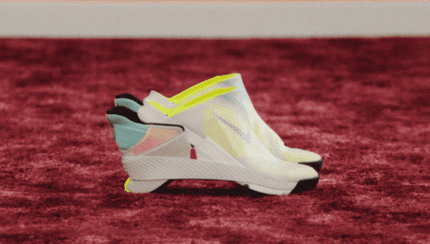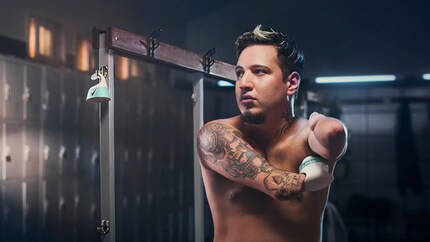
Is fashion ready for accessibility?
Although the fashion world presents itself as extremely versatile and increasingly focuses on diversity and body positivity, the market for adaptive fashion is still small.
Thanks to the «Body Positivity» and «Diversity» movements, a rethinking is finally happening in the fashion world. After all the average customer is far from being size zero with model height. But what about people with a physical impairment? Although models such as Mario Galla, who was born with a shortened thigh and Bri Scalesse, who has been in a wheelchair since a car accident, are booked more often by designers, diversity should be reflected not only in campaigns or on the catwalk, but also in collections. That’s in terms of cut and functionality. Lifestyle brands such as Tommy Hilfiger, Nike and MOB Industries are aware of this and are bringing adaptive fashion to the spotlight with their clothing collections and a sneaker.
One billion people have a disability, according to the World Health Organization. A high number. Nevertheless, they continue to be disadvantaged in many areas of life. This is also the case in fashion. Depending on the impairment, many items of clothing can’t be put on alone or only with difficulty. Or have you ever tried closing a button one-handed? Seams are tricky, too. If they’re in an awkward place, they will cause pressure points. The devil is in the details. Adaptive fashion needs to be functional. Heidy Anneler, who has been in a wheelchair since the age of five after an accident, is very familiar with this problem: «It’s mainly the zippers on pants and jackets that I can’t close and because of that, I’m often cold. In addition, the pant legs and sleeves are often cut too tight.»
Functional fashion
Tommy Hilfiger has been designing adaptive fashion for a while. His interest stems from personal experience. Several people in his family have a disability. Because the designer knows all too well how challenging it is to put on and take off clothes every day, he launched «Tommy Adaptive», a line created by the fashion designer based on his everyday experiences. In addition to magnetic closures, internal donning loops and fabrics made of stretch, Tommy Hilfiger relies on wide waistbands that are equally suitable for prostheses and splints. The only issue from the point of view of tetraplegic Heidy Anneler is that «the items are far too expensive for my taste. I want adaptive fashion that is beautiful and affordable at the same time.»
Sports manufacturers are also jumping on the adaptive clothing bandwagon. While Adidas relies on models such as Lauren Wasser in campaigns – the golden prosthetic legs have become her trademark – Nike is taking it a step further, launching its first accessible sneaker. The «Go Fly Ease» can be put on hands-free – in other words, without even touching the shoe. This is made possible by a bi-stable hinge that secures that the shoe opens and closes. By standing on the heel, you can take the sneaker off without bending down.

Clever cosmetics
Beauty labels have also recognised the urgency of this market. Many cosmetic products have a lid. To open this, as a rule, two hands are needed. The industry is becoming increasingly aware of it. For this reason, the brand Degree (also known as Rexona) has developed the «Degree Inclusive», a deodorant with a lid you open with one hand. This is made possible by the cap with a hook on which the product is suspended. To open, pull down the rest of the package. A magnetic closure makes it easier to put the lid back on. To wet the armpit with just one wipe, the applicator is larger than that of a conventional deodorant. In addition, there is Braille on the packaging so that blind people can understand what the product is. Whether and when the product will come to Switzerland is still unknown.

The market for adaptive fashion is getting off to a slow start. One obstacle that stands in the way of many accessible fashion manufacturers are the algorithms on social media. They’re to blame for blocking content from adaptive fashion labels on Facebook and Co. According to Fashion United, these algorithms classify such ads as medical. This isn’t allowed to be advertised on social media and is therefore considered a rule violation, resulting in the ads being hidden. In this way, the reach of adaptive fashion is significantly reduced and the circulation of a still unknown label is made even more difficult.
Hopefully, this isn’t a short-lived trend, but an ongoing change in direction of inclusivity. When the fashion industry shows itself not only to be adaptable, but also produces adaptively and sells the goods at a fair price, will it be on the right track and accessible to all.
When I’m not exploring the depths of the sea as an open water diver, I enjoy plunging into the world of fashion. On the streets of Paris, Milan and New York is where I keep my eyes peeled for the latest trends. And I’ll show you how to take them from the catwalk to your everyday life.
From the latest iPhone to the return of 80s fashion. The editorial team will help you make sense of it all.
Show all